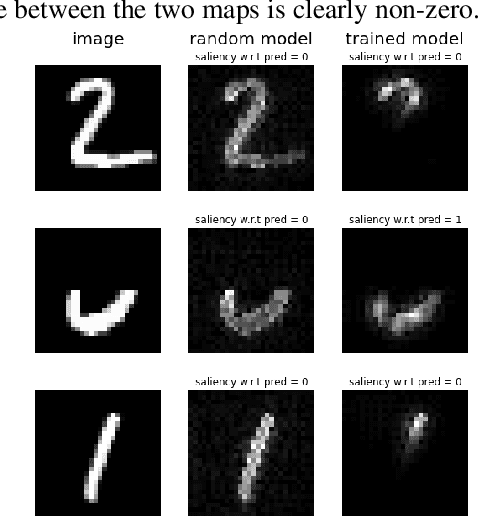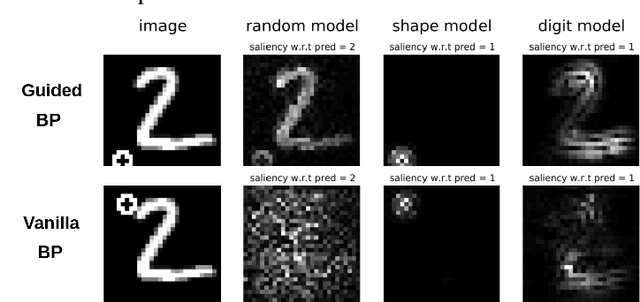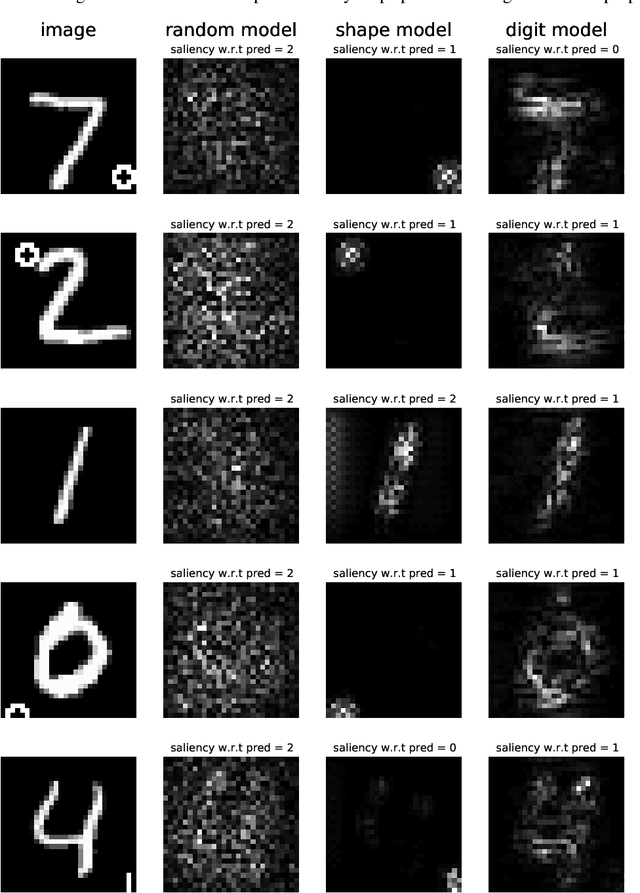Revisiting Sanity Checks for Saliency Maps
Paper and Code
Oct 27, 2021



Saliency methods are a popular approach for model debugging and explainability. However, in the absence of ground-truth data for what the correct maps should be, evaluating and comparing different approaches remains a long-standing challenge. The sanity checks methodology of Adebayo et al [Neurips 2018] has sought to address this challenge. They argue that some popular saliency methods should not be used for explainability purposes since the maps they produce are not sensitive to the underlying model that is to be explained. Through a causal re-framing of their objective, we argue that their empirical evaluation does not fully establish these conclusions, due to a form of confounding introduced by the tasks they evaluate on. Through various experiments on simple custom tasks we demonstrate that some of their conclusions may indeed be artifacts of the tasks more than a criticism of the saliency methods themselves. More broadly, our work challenges the utility of the sanity check methodology, and further highlights that saliency map evaluation beyond ad-hoc visual examination remains a fundamental challenge.
 Add to Chrome
Add to Chrome Add to Firefox
Add to Firefox Add to Edge
Add to Edge